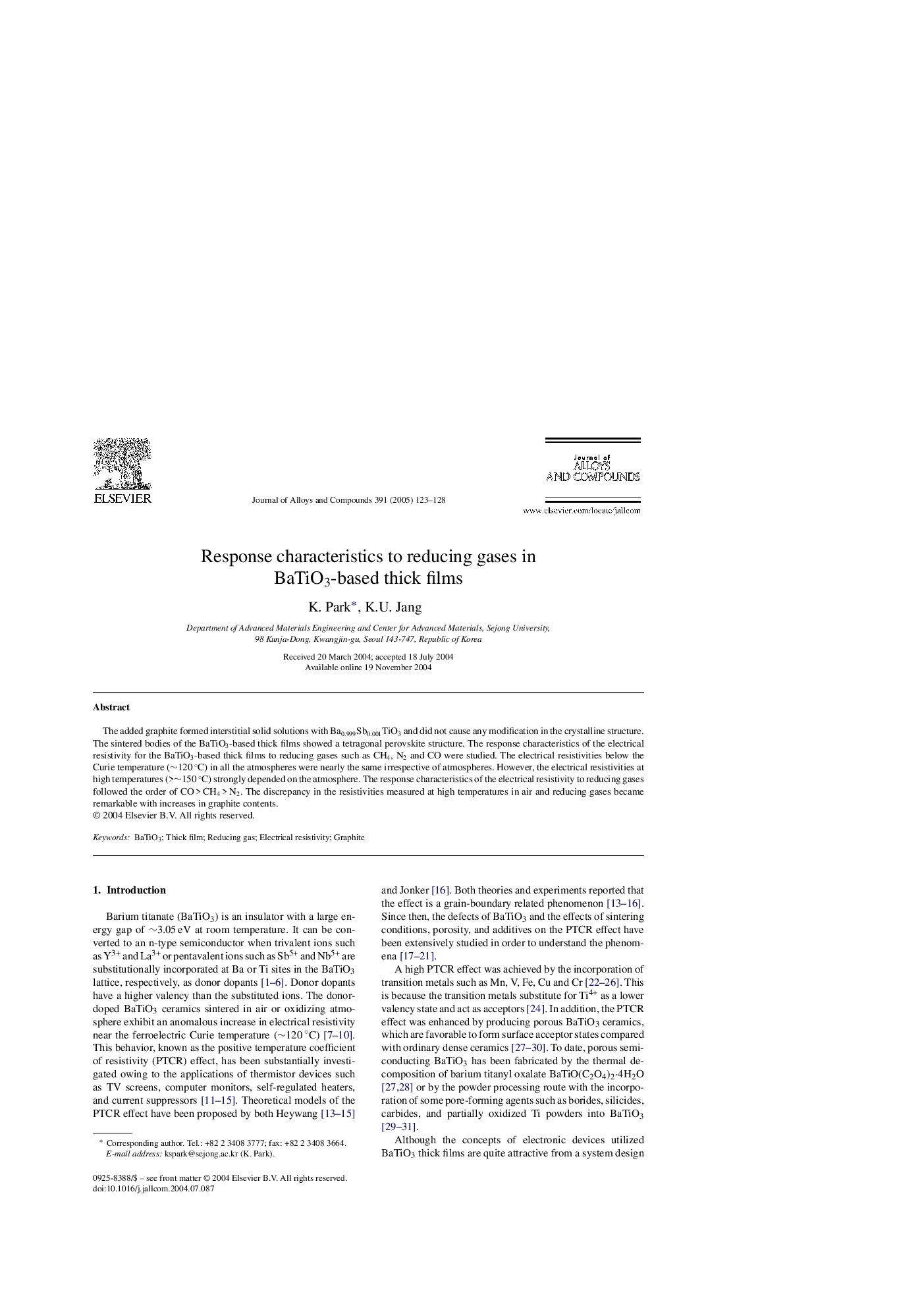| Article ID | Journal | Published Year | Pages | File Type |
|---|---|---|---|---|
| 9803971 | Journal of Alloys and Compounds | 2005 | 6 Pages |
Abstract
The added graphite formed interstitial solid solutions with Ba0.999Sb0.001TiO3 and did not cause any modification in the crystalline structure. The sintered bodies of the BaTiO3-based thick films showed a tetragonal perovskite structure. The response characteristics of the electrical resistivity for the BaTiO3-based thick films to reducing gases such as CH4, N2 and CO were studied. The electrical resistivities below the Curie temperature (â¼120 °C) in all the atmospheres were nearly the same irrespective of atmospheres. However, the electrical resistivities at high temperatures (>â¼150 °C) strongly depended on the atmosphere. The response characteristics of the electrical resistivity to reducing gases followed the order of CO > CH4 > N2. The discrepancy in the resistivities measured at high temperatures in air and reducing gases became remarkable with increases in graphite contents.
Related Topics
Physical Sciences and Engineering
Materials Science
Metals and Alloys
Authors
K. Park, K.U. Jang,
